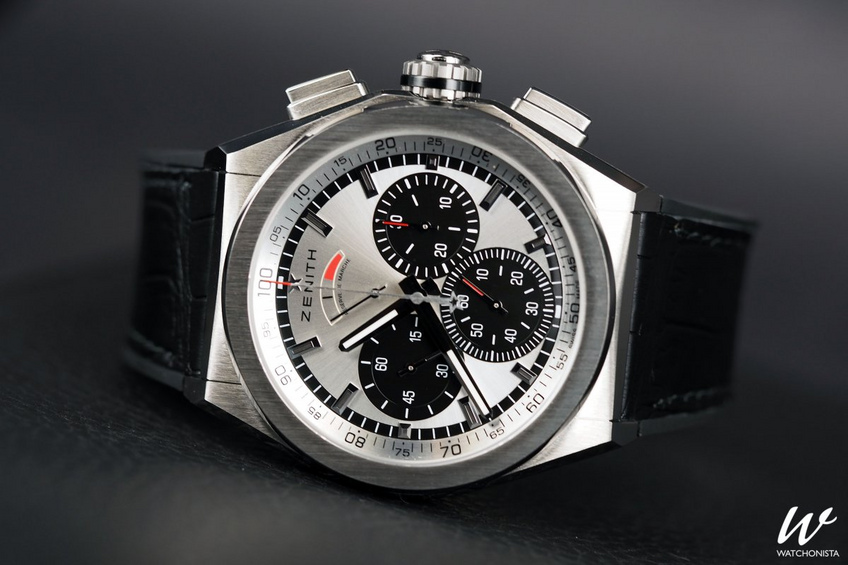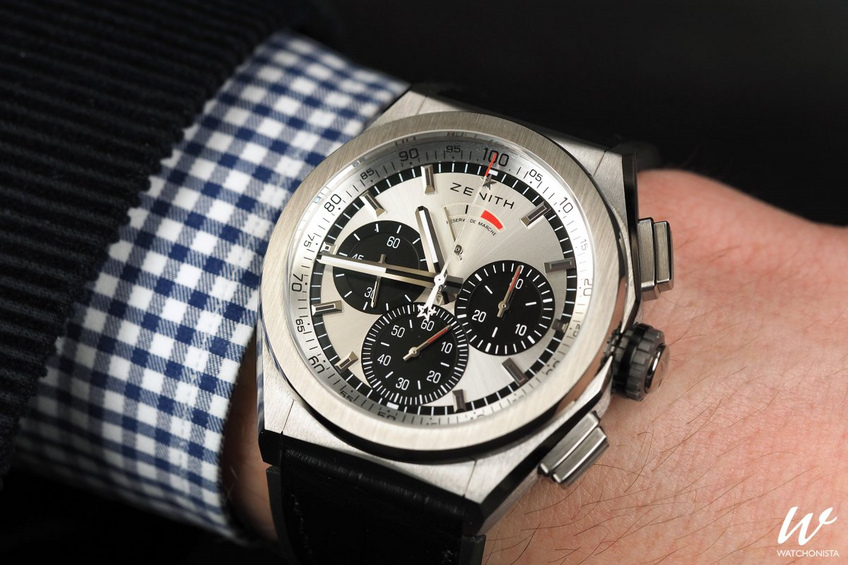

BASELWORLD 2017: Zenith Defy El Primero 21 – The supreme legend
Successor to the famous El Primero, the first automatic chronograph movement in history capable of measuring tenths of a second, the Defy El Primero 21 goes further in terms of time-keeping and gains a decimal place of precision in the process.
Before we get to grips with the new Zenith El Primero 21 calibre housed within the Defy El Primero 21 chronograph, we need to go back in time to fully understand the importance of the relationship between two movements that were built to the standards of two different generations.
Back to the roots of chronometry
Since it was first established in 1865, the Zenith workshop has won 2,333 prizes for its chronograph manufacture. An across-the-board champion in this sphere of activity, Zenith has always been a favourite among watch users in search of absolute precision. Over the ages, the very notion of precision has evolved. While in 1969, for example, a tenth of a second would suffice, nowadays we find it somewhat lacking. We're more for the fine time measurement offered by the 21st century atomic clock. But isn't absolute precision the Holy Grail of every watchmaker?
To be able to mechanically fraction off a second into 100 equal parts is a hitherto unheard-of achievement for wearers of luxury mechanical watches, who are perfectly satisfied with an operating accuracy of around one fifth of a second. As Guy Sémon once said: "both the 1969 El Primero calibre and the El Primero 21 have the same three qualities in their genes: precision, speed and reliability. "That one sentence says it all. So now let's get down to the nitty gritty …
The quest for pure efficiency
Some watchmaking entities regularly try their hand at producing masterpieces. This often manifests itself in fine watchmaking, where master craftsman are driven by the ambition to create a few exceptional pieces. Zenith's approach is completely different in that its new-generation calibre was designed from the outset with a view to its industrialisation. To illustrate this point, the 1969 El Primero measured just 30 mm in diameter, while the new version measures 32 mm. Likewise, the new El Primero 21 has a thickness of 7.9 mm against the original 6.50 mm, and comprises 203 parts as opposed to 278 for the 1969 version.
Much work has gone into optimising increasingly complex functions in order to reduce the number of parts, rather like what is happening in the automotive or aeronautical industries. Thus, the Defy El Primero 21 represents the fruits of modern engineering, the culmination of the successful collaboration between man and machine. Engineers have brought their full expertise to bear in optimising a new movement with simplified adjustment and assembly. The result of this major contribution is a heightened level of performance and certification.
When the exceptional becomes the norm
An entirely new El Primero calibre offering increased performance and fitted with new regulating organs and a patented chronograph control mechanism is on offer this year from the famous manufacture founded in 1865 by Georges Favre-Jacquot at Le Locle. This contemporary COSC-certified chronometer measures time down to one fifth of a second thanks to the "Dual Chain" system invented by LVMH engineers. But when you think of it, isn't it normal for a manufacture specialising in precision and chronometry to come up with such an ingenious device?
A post shared by watchonista.com (@watchonista) on Mar 23, 2017 at 9:23am PDT
Pure mechanical genius and a world first
The integrated architecture of the El Primero 21 is at once traditional and innovative. The movement naturally boasts automatic winding and the classic regulating group, vibrating at a frequency of 5 Hertz in memory of the previous calibre launched in 1969, is certified a chronometer by the COSC. To guarantee these exceptional performances, the "Dual Chain" calibre consists of two barrels, one for the classic regulating group and the other for the chronograph function precise to 1/100th of a second. The high capacity of the regulating organ on the chronograph, which beats at 360,000 vibrations an hour, therefore guarantees a power reserve of 50 hours per item (remaining power is indicated on dial).
Moreover, the El Primero 21 calibre also has a patented chronograph zero reset function comprising three differential systems and an exclusive pusher for the simultaneous zero reset of seconds, tenths and hundredths. It should also be noted that this innovative calibre uses a new type of balance spring, developed by LVMH engineers using a patented technology that is a world first. The exceptional physical and mechanical properties of the graphene matrix balance spring make the invention resistant to temperatures and magnetic fields of well over 15,000 Gauss.
Stable and precise in all conditions, it allows the new-generation time-telling device, displaying the seconds at 9 o'clock and capable of short-term measurements (to the nearest 1/100th of a second, 1/10th of a second at 6 o'clock and over 30 minute intervals at 3 o'clock), to guarantee well above-average precision for both a watch and a chronograph… Watch this space!


















